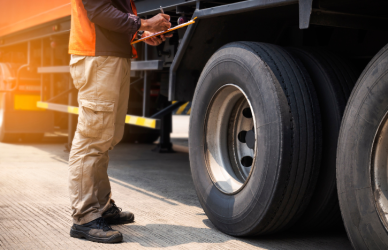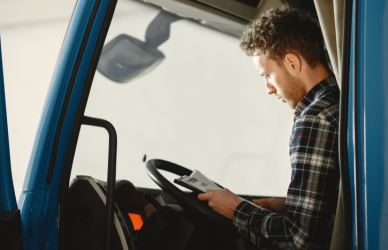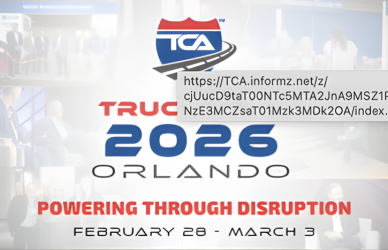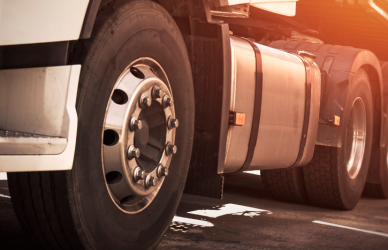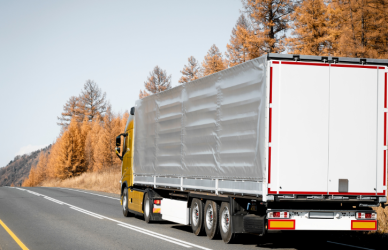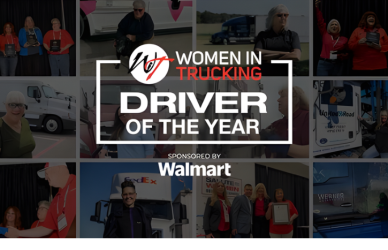At this year’s ACT Expo in Anaheim California, several leading figures in the trucking industry revealed their personal reasons for championing green initiatives.
Rakesh Aneja, VP and Chief of eMobility at Daimler Truck North America, displayed a photo of his beloved family on his phone’s screensaver during his speech at the Advanced Clean Transportation Expo. This serves as a daily reminder that their efforts to reduce carbon emissions are for the benefit of future generations.
Meanwhile, Volvo Trucks North America President Peter Voorhoeve showed a picture of a young girl surrounded by nature and expressed that it was imperative to cut CO2 emissions by 50% by 2030. By doing so, we can secure a brighter future for the next generation to experience the beauty of our environment.
In his keynote address, John Rich, CTO of PACCAR Inc., emphasized the importance of taking concrete actions beyond mere appealing terms.
“We’re facing a convergence of technology, regulation and climate change. You’ll hear words like disruption and transformation and, my favorite, existential threat, like we’re all dinosaurs waiting for the meteor to hit us,” Rich said at the Anaheim Convention Center. “It’s the people who have to get this done – people in this room. Let’s stop using beautiful words; instead let’s talk about how we’re going to embrace the challenge and do our part in climate change, how we’re going to improve the products using zero emissions technologies and, most importantly, how we’re going to work together to make this transition possible for OEMs, dealers, suppliers and fleets.”
The theme of cooperation took center stage at this year’s ACT Expo as DTNA joined forces with NextEra Energy Resources and BlackRock Alternatives to create Greenlane. This joint venture aims to develop a high-performance zero-emission charging and hydrogen fueling network for medium- and heavy-duty electric and hydrogen vehicles across the United States. Despite this significant investment, DTNA recognizes that further collaboration and investment will be necessary to meet the ambitious climate targets set for the industry by 2032. To meet these goals, an estimated $52 billion will be required.
“It’s clear that we cannot do this alone, even with the strength of our three companies. It’s clear we cannot do this alone as an industry,” O’Leary said. “There are more than 3,000 different electric utilities in the United States. Together, with the regulators, they’re focused on delivering cost-effective power to their customers. Understandably, those customers are unready to bear the brunt of rising rates to offset the cost of major infrastructure projects that they don’t see as directly benefiting them. But to meet the requirements of regulatory action, to meet the ambitions of our nation and this industry, we need utilities to act now in order to create a bare minimum of operability.”
During his keynote address at the ACT Expo, O’Leary emphasized the need for collaboration among government, private companies, and utilities in meeting sustainable transportation needs. He outlined a three-pronged approach to industry transformation: manufacturing and distributing electric vehicles, lowering the total cost of ownership, and building infrastructure – a key theme at the conference.
“What we’re finding or, more importantly, what our customers can’t find is the charging infrastructure to run these products. Infrastructure buildouts are flailing, and we’re destined to fail to meet the ambitious goals of this state, of our country and the world until emphasis is put on meeting the charging needs of the electric fleet,” he said. “If we ignore this reality, if we ignore the energy demand, if we ignore the differences in charging needs, we’re going to find a lot of orphaned equipment sitting at depots or sitting idle on factory lots.”
Much like DTNA, Volvo has also entered a partnership to address charging needs. The company has teamed up with Pilot Flying J to develop additional public charging infrastructure. The collaboration aims to pave the way for cleaner, more accessible transportation.
“Partnership (is) more important than ever because none of us can afford to do this by ourselves,” said Rich of Paccar, which has partnerships with autonomous truck developer Aurora, Platform Science connected truck technology and Toyota. He admits that regulators will set the pace for transition to zero emission vehicle adoption keeping operating costs as a top priority. With this in mind, he acknowledges that the progress to a green future will be expensive.
According Voorhoeve, the company’s goal of reducing CO2 emissions by 50% by 2030 will still involve using diesel engines. While Volvo plans to explore alternative energy sources, diesel power will remain a significant part of the company’s journey. Ryan O’Leary, a representative of the industry, agrees that diesel vehicles will remain a key part of transportation in the foreseeable future.
“That diesel propulsion is incredibly efficient is undeniable; to say that it has propelled and that it will continue to propel us, our economies and humankind forward in immeasurably positive ways is undeniable; and to say that time for change is necessary is, similarly, undeniable,” he said. “Despite diesel’s many benefits and despite its many efficiencies, we need a future comprised of alternatives – alternatives that offer us, our customers and society cleaner choices.
“Whether battery electric, hydrogen fuel cell or hydrogen combustion, alternatives do exist, and for select applications, they can work today,” O’Leary added. “But they are not the panacea we’ve been hoping for, at least not until we address the realities.”
Source: CCJDigital



